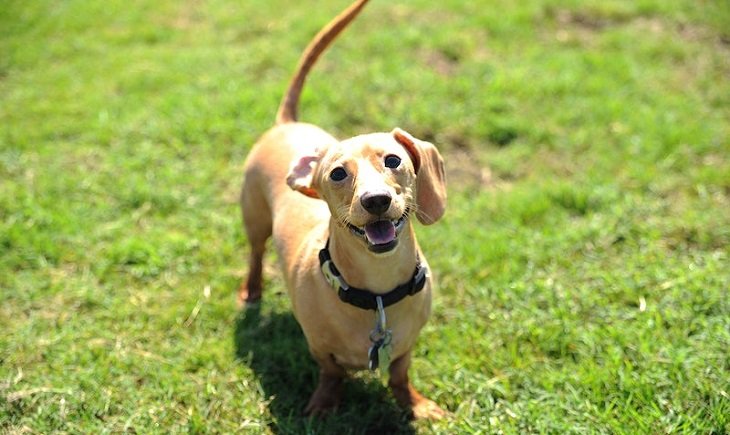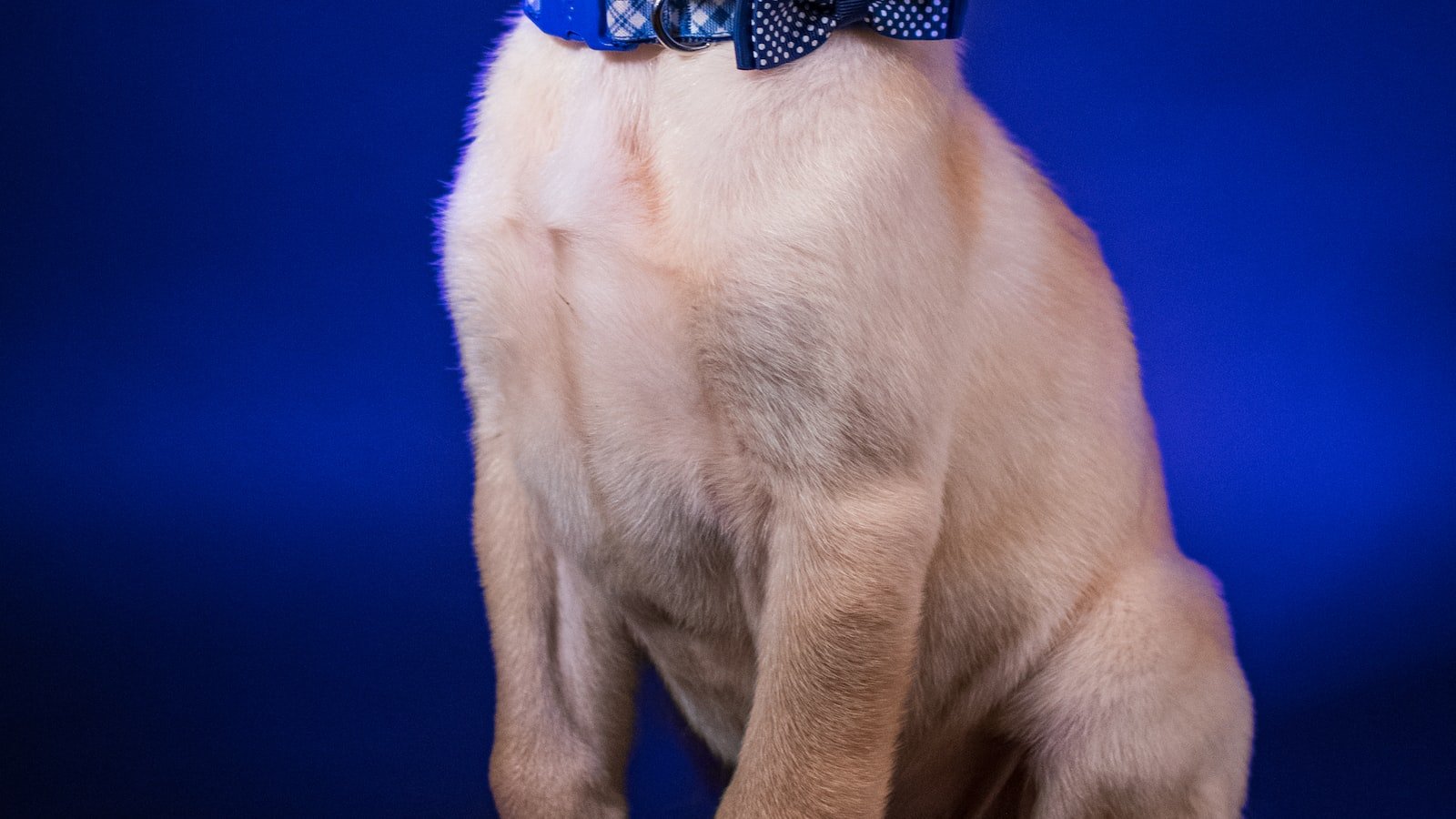The front door closes with a resounding thud, echoing through the house as you reluctantly leave for work. As you make your way down the street, a twinge of guilt tugs at your heartstrings, knowing that your beloved furry companion will be left alone for hours on end. In a perfect world, dogs would be able to accompany us on all our adventures, but the reality often demands that they endure solitude. So, the pressing question arises: can you train a dog to be left alone? Are our four-legged friends capable of adapting to the solitary life we sometimes impose upon them? Let’s delve into the intricate world of canine behavior to uncover what you need to know about training your dog to be alone.
Table of Contents
- Understanding Separation Anxiety in Dogs
- Building Independence in Your Dog
- Effective Training Techniques to Help Your Dog Stay Calm Alone
- Creating a Safe and Comfortable Environment for Your Dog
- Tips and Strategies for Successful Alone Time Training
- Q&A
- Concluding Remarks

Understanding Separation Anxiety in Dogs
What is Separation Anxiety in Dogs?
Separation anxiety is a common behavior problem that affects many dogs. It occurs when dogs experience intense distress and fear when they are left alone or separated from their owners. This condition can manifest in a variety of ways, including excessive barking, destructive behavior, pacing, and even self-injury.
Signs and Symptoms of Separation Anxiety
It’s important for dog owners to be able to recognize the signs and symptoms of separation anxiety to address the issue effectively. Some common indicators include:
- Excessive barking or howling when left alone
- Destructive behavior, such as chewing on furniture or objects
- Escaping attempts, like scratching or clawing at doors and windows
- Urinating or defecating indoors, even when house-trained
- Excessive salivating or panting
- Restlessness and pacing
Treating and Managing Separation Anxiety
While separation anxiety can be a challenging problem to overcome, there are effective treatment and management strategies available. It’s crucial to involve a professional dog trainer or behaviorist who specializes in separation anxiety to develop a tailored plan for your furry friend. Some techniques that may be recommended include:
- Gradual desensitization: This approach involves gradually exposing the dog to being alone in a controlled manner, starting with short periods and gradually increasing them.
- Counter-conditioning: This technique aims to change the dog’s negative association with being alone by pairing it with positive experiences, such as giving treats or using interactive toys.
- Using calming tools: These can include puzzle toys, anti-anxiety shirts, and even medications prescribed by a veterinarian to help manage anxiety levels.
By understanding the nature of separation anxiety and implementing appropriate strategies, dog owners can greatly improve their pet’s well-being and help them feel more secure and comfortable when left alone.

Building Independence in Your Dog
Helping your dog develop a sense of independence is essential for their overall well-being. By encouraging independence, you are fostering a confident and self-reliant companion who can navigate the world with ease. Here are a few strategies to nurture independence in your furry friend:
- Gradual Separation: Start by leaving your dog alone for short periods and gradually increase the duration. This will help them understand that being alone is a normal part of life and that you will always return.
- Enrich their Environment: Provide your dog with interactive toys and puzzles that encourage independent play. This not only keeps them mentally stimulated but also gives them a sense of accomplishment when they solve the puzzle on their own.
- Teach Self-Soothing Skills: Help your dog learn to soothe themselves by rewarding calm behavior and gradually reducing their dependence on constant attention. Encourage them to relax in their designated space, such as a cozy bed or crate, with comforting toys.
- Positive Reinforcement: Reward your dog when they make independent choices and demonstrate confidence. Whether it’s exploring new environments or calmly greeting strangers, acknowledge and praise their efforts.
- Exposure to New Experiences: Introduce your dog to different sights, sounds, and environments to broaden their comfort zone. Gradually expose them to unfamiliar situations, people, and other animals, while providing reassurance and support.
Remember, is an ongoing process that requires patience and consistency. By implementing these strategies, you are helping your canine companion become a well-rounded individual who can handle various situations with confidence and ease.

Effective Training Techniques to Help Your Dog Stay Calm Alone
Leaving your furry friend alone can often be a challenging experience, but fear not! With the right training techniques, you can help your dog stay calm and confident while you are away. Here are some effective methods to ensure your pup feels comfortable when left alone:
- Create a safe space: Designate a specific area in your home where your dog can retreat to during your absence. Ensure it has their bed, toys, and familiar scents to provide a sense of security.
- Practice gradual departures: Help your dog become accustomed to your absence by practicing short departures and gradually increasing the duration. Start with a few minutes and slowly work your way up to hours to build their independence.
- Engage their mind: Mental stimulation is key to keeping your dog calm when alone. Provide interactive toys or puzzle feeders that require problem-solving, which can divert their attention and alleviate anxiety.
- Use positive reinforcement: Reward your dog for calm behavior when left alone. Praise and treats can create a positive association with solitude, reinforcing their confidence and reducing separation anxiety.
- Seek professional help if needed: If your dog continues to struggle with staying calm alone, it may be beneficial to consult a professional dog trainer or behaviorist who can provide specialized guidance to address any underlying issues.
Remember, every dog is unique, so find the techniques that work best for your furry companion. With patience, consistency, and the right training methods, you can help your dog feel at ease when being left alone.

Creating a Safe and Comfortable Environment for Your Dog

Your dog’s well-being and happiness depend on the environment you provide. Whether you’re a new pet owner or a seasoned dog lover, here are some tips to ensure your furry friend feels safe and comfortable:
1. Designate a cozy space: Dogs need a spot where they can retreat and relax. Set up a comfortable bed or create a cozy corner where your pup can retreat when they need some downtime. Make sure it’s in a quiet area and is easily accessible for your dog.
2. Childproof your home: Just like human babies, dogs are naturally curious creatures. Do a thorough inspection of your living space to identify any potential hazards. Secure loose wires, store toxic substances out of reach, and ensure all furniture is stable. Eliminate any choking hazards, and use baby gates to restrict access to off-limits areas.
3. Provide mental stimulation: Boredom can lead to destructive behavior, so keep your dog’s brain engaged. Rotate their toys regularly to prevent boredom and introduce puzzle toys to challenge their problem-solving skills. Engage in interactive playtime, teach them new tricks, or enroll them in training classes. Mental stimulation is key to a happy and well-adjusted pup!
By following these guidelines, you’ll create an environment where your dog can thrive. And remember, a happy dog means a happy home!
Tips and Strategies for Successful Alone Time Training
When it comes to alone time training, finding strategies and techniques that work for you is essential. Here are a few tips to help you make the most out of your alone time and achieve success:
- Set realistic goals: Start by setting achievable goals for yourself during your alone time. This could be anything from learning a new skill to finishing a project. By setting clear goals, you’ll stay focused and motivated.
- Create a dedicated space: Having a designated space for your alone time can help you get into the right mindset. Whether it’s a cozy corner in your home or a quiet café, find a place where you can concentrate and be free from distractions.
- Establish a routine: Establishing a routine for your alone time can be incredibly helpful. Try to set aside specific blocks of time each day or week to work on your tasks. Consistency is key when it comes to training your mind to focus and be productive.
- Eliminate distractions: Identify and eliminate any distractions that might hinder your alone time. Consider turning off notifications on your phone, closing unnecessary tabs on your computer, or using noise-canceling headphones. Creating a distraction-free environment will enhance your concentration and productivity.
- Embrace solitude: Alone time is an opportunity to reconnect with yourself and recharge. Embrace solitude by indulging in activities that bring you joy or help you relax. Whether it’s reading a book, meditating, or taking a long walk, make sure to prioritize self-care during your alone time.
- Reflect and evaluate: Take some time to reflect on your alone time sessions and evaluate your progress. Celebrate your accomplishments, identify areas for improvement, and adjust your strategies accordingly. Self-reflection is an important part of the learning process.
Remember, alone time training is a personal journey, and what works for one person may not work for another. Experiment with different techniques, be patient with yourself, and don’t be afraid to seek support or guidance when needed. Enjoy the process, embrace the solitude, and watch yourself thrive!
Q&A
Can You Train a Dog to Be Left Alone? What You Need to Know
1. Is it possible to train a dog to be left alone?
Yes, it is possible to train a dog to be comfortable being left alone. However, it requires time, patience, and positive reinforcement to teach them how to handle separation.
2. Why is it important for dogs to be left alone?
Teaching a dog to be left alone is crucial for their well-being as it helps prevent separation anxiety and destructive behavior. Dogs should learn to feel secure and confident even when their owners are away.
3. How can I start training my dog to be left alone?
To begin training, start by leaving your dog alone for short periods of time and gradually increase the duration. Provide them with engaging toys or puzzles to keep them occupied, and reward them when they remain calm and relaxed during separation.
4. Should I crate train my dog to help them be more comfortable alone?
Crate training can be a useful tool in teaching dogs to be left alone, as it offers them a safe and secure space. However, it is important to introduce crate training gradually and ensure that the crate is a positive and pleasant environment for your dog.
5. Are there any specific techniques to help my dog cope with being alone?
Using desensitization techniques, such as leaving the house for short periods and gradually increasing the time, can help your dog learn to handle being alone. Additionally, providing them with interactive toys or puzzles can distract and entertain them while you’re away.
6. What signs should I look out for to assess if my dog is struggling with being alone?
If your dog exhibits excessive howling, barking, destructive behavior, or shows signs of distress when you leave, it may indicate that they are struggling with being alone. In such cases, it is important to consult a professional dog trainer or behaviorist for guidance.
7. Can I train an older dog to be left alone?
Absolutely! Dogs of any age can learn to be comfortable being left alone. However, older dogs may require more patience and time during the training process, as they might have established behaviors or fears that need to be addressed.
8. Is it okay to leave my dog alone for an extended period?
Ideally, dogs should not be left alone for extended periods, as they require social interaction and mental stimulation. If it becomes necessary, make sure to provide them with plenty of food, water, and toys to keep them occupied, and consider hiring a dog sitter or walker to check on them periodically.
9. Should I consider getting another dog as a companion?
While getting another dog can provide companionship for your current pup, it is important to evaluate your lifestyle, resources, and if both dogs will get along. Another dog should not be a solution to separation anxiety, as individual training is necessary for each dog.
10. Do all dogs require the same amount of training to be left alone?
No, every dog is unique and may require different amounts of training to be comfortable being left alone. Factors such as breed, age, temperament, and previous experiences can influence the amount of training needed. Patience and consistency are key in successfully training your dog to handle separation.
Concluding Remarks
As we bid farewell to the world of training our furry friends to embrace solitude, one thing becomes clear: the realm of canine independence is indeed a captivating journey to embark upon. Our guide through this maze of longing gazes and wagging tails has illuminated the path, unveiling the mysteries that lie within the art of training a dog to be left alone.
Whether it be the knowledge of their innate pack mentality or the realization that patience is truly a virtue, we now possess a repertoire of tools to transform a dog’s separation anxiety into tranquil serenity. From the gentle whispers of positive reinforcement to the soothing lullabies of desensitization, it is through understanding their needs that we can fill the void and cultivate a sense of security within their hearts.
The bond between human and canine has always been a tale of mutual devotion, but now, armed with the knowledge of training independence, we have the power to navigate uncharted territories. As we take our leave from this educational odyssey, we must remember that the pursuit of nurturing our loyal companions is an endless endeavor, one that requires constant love, care, and understanding.
So, dear reader, as you venture forth with this newfound wisdom, know that you hold the key to unlocking the magical world of solitude for your beloved furry companions. With determination and compassion, you can provide them with the life they deserve—one that encompasses both companionship and the ability to savor the serenity of their own company.
In this ever-evolving journey through the complexities of a dog’s emotional landscape, remember that training them to be content in their own solitude is not a solitary task—it is a partnership rooted in trust and patience. So go forth, unleash your creativity, and embark on this extraordinary voyage towards harmonious coexistence. Your loyal canine awaits, eager to discover the beauty of independence, hand in paw, with you by their side.
As an affiliate, my content may feature links to products I personally use and recommend. By taking action, like subscribing or making a purchase, you’ll be supporting my work and fueling my taco cravings at the same time. Win-win, right?
Want to read more? Check out our Affiliate Disclosure page.